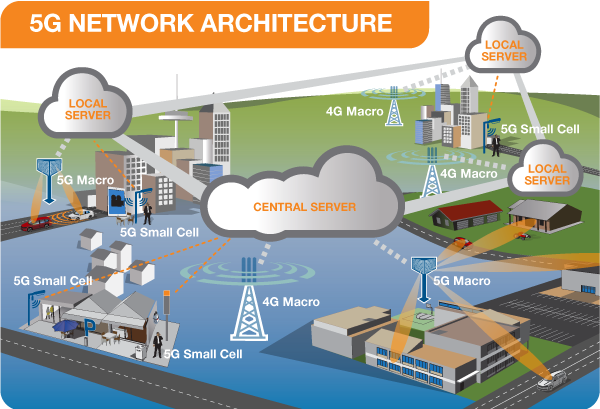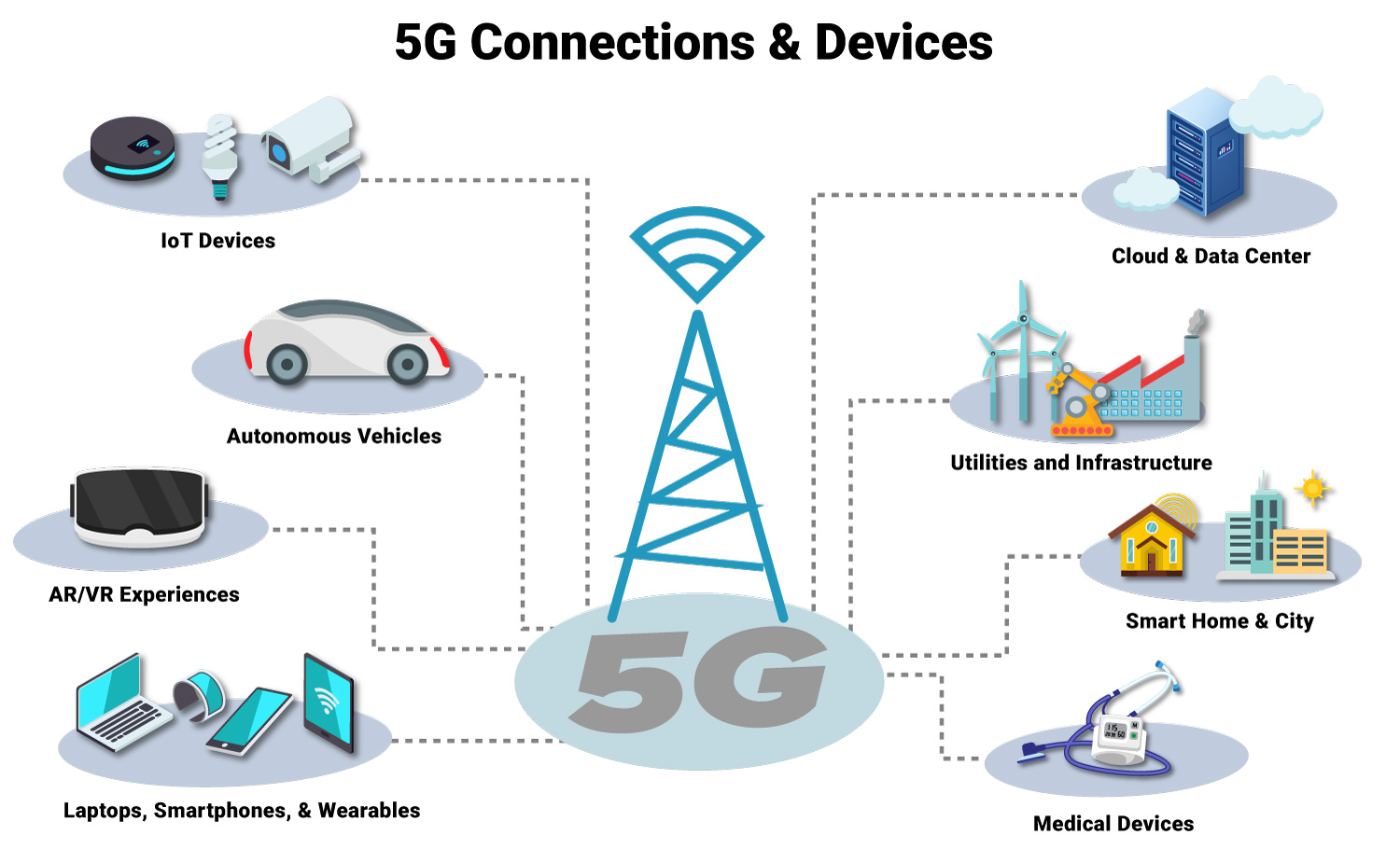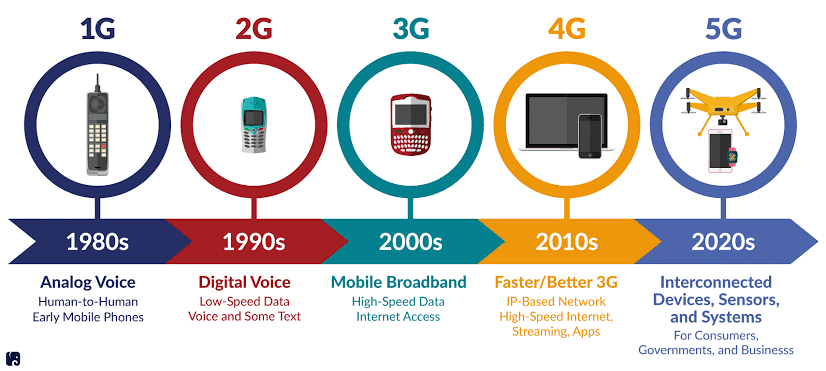Introduction
The term "5G" merely designates the most recent and up-to-date mobile wireless standard, which is based on the IEEE 802.11ac broadband technology standard. Instead, than focusing on faster Internet connection speeds, 5G aspires to be more capable than current 4G LTE, supporting more mobile broadband users per area unit and data consumption in gigabytes per second. This would make it possible for a significant section of the population to watch high-quality streaming video on their mobile devices for several hours each day, even when they are not near wifi hotspots.
The Internet of Things, also known as machine-to-machine (M2M) communication, is supported more efficiently by 5G research and development, with the goal of reducing costs, battery consumption, and latency while boosting connection and security across a wide population.

Features of 5G
• High & increased peak bit rate (Up to 10Gbps connections to endpoints in the field)
• Larger data volume per unit area (i.e., high system spectral efficiency)
• High capacity to allow more devices connectivity concurrently and instantaneously (100 percent coverage)
• More bandwidth
• Peak rate of 10 Gb/s
• Lower battery consumption
• Better connectivity irrespective of the geographic region where you are in
• A larger number of supporting devices (10 to 100x number of connected devices)
• Lower cost of infrastructural development
• Higher reliability of the communications (One millisecond end-to-end round trip delay)
The network's foundation on user experience, system performance, better performance, business models, and management & operations is its most distinctive feature. Beam Division Multiple Access (BDMA) and Non- and Quasi-Orthogonal or Filter Bank Multicarrier (FBMC) Multiple Access are two examples of cutting-edge access technologies that will be used in 5G.
The development of 5G will be supported by a cutting-edge technology called fog computing, which will assist in attaining low latency, high mobility, high scalability, and real-time execution. To learn more about the Applications of 5G, click the link.
Working of 5G
In 5G, the network service area is split up into discrete regions known as cells. A local antenna and low-power automated transceiver (transmitter and receiver) in the cell are used by all 5G wireless devices in the cell to broadcast and receive radio waves for communication. A high-bandwidth optical fibre or wireless backhaul connection connects the local antennas to the telephone network and the Internet. To establish a connection with the cell and to use the internet in areas where 5G access is not accessible, the new 5G wireless devices also enable 4G LTE. While 4G can only support up to 100,000 devices per square kilometre, 5G can support up to one million.
5G operates on 3 different spectrum bands.
1. Low-band spectrum – Expect peak speeds up to 100Mbps
2. mid-band spectrum – Expect peak speeds up to 1Gbps
3. high-band spectrum – Expect peak speeds up to 10Gbps

Areas where 5G is used
o Internet of Thongs – IoT
o Health care
o Public safety and infrastructure
o Autonomous vehicles
o Manufacturing
o Entertainment/Gaming
o Supply-chain management
o Energy

Deployment of 5G worldwide
In April 2019, the first country to use 5G was South Korea. Verizon then started offering 5G services in the country. After Globe Telecom commercially released its 5G data plans to clients in June 2019, the Philippines became the first nation in Southeast Asia to establish a 5G network. The 5G network has also been put into place in the United States, China, the United Kingdom, and Germany.

Conclusion
The world will be infinitely connected thanks to the more intelligent 5G wireless technology. It is intended to offer unrestricted call volumes, astounding data capacities, and extensive data broadcast. Access to information, communication, and entertainment would be available to everyone around the world without interruption, giving our lives a new dimension and significantly altering how we live. Additionally, governments and regulators may utilise this technology to improve governance and foster healthier settings, which will undoubtedly drive further investment in 5G, the next-generation technology.
